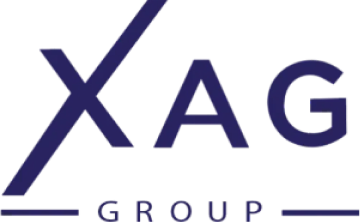Houston’s Robust Economic and Employment Growth
Houston continued to lead in employment and population growth in 2024, outpacing other Texas metros like Dallas-Fort Worth and Austin. Over the 12 months ending in June 2024, Houston employers added 80,400 net new jobs, marking a 2.4% increase in total nonfarm employment. This job growth reflects a strong local economy driven by significant expansions in the private education and healthcare sectors, which accounted for approximately 26.5% of the total employment growth, with the addition of 21,300 net new positions. Government agencies also contributed significantly, creating 18,400 jobs, much of which can be attributed to expansions in public healthcare institutions as population growth drives demand for services.
Houston has solidified its position as a national leader in medical development, posting the highest net absorption for medical office buildings among U.S. metros in 2023. Major projects such as Houston Methodist Sugar Land, Baylor College of Medicine at Dynamic One, and the Kelsey Seybold Springwoods Village Campus have been pivotal. Additionally, the Texas Medical Center celebrated the opening of TCM3, a 250,000-square-foot facility at the developing Helix Park Campus, further solidifying its status as a premier healthcare hub. The expansion of Texas Children’s Hospital’s Pavilion for Women by $245 million underscores Houston's ongoing investment in healthcare infrastructure.

Current Market Conditions
Houston’s multifamily market is showing signs of recovery, with vacancy rates decreasing to 11.1% after peaking earlier in the year. Metro multifamily occupancy dropped 50 basis points annually to 92.5% in the second quarter of 2024 as new deliveries outpaced absorption over the past 12 months. However, this lower-than-average occupancy rate is expected to be temporary, as the pipeline of new units is projected to peak in 2024 and then decline over the next two years. Smaller submarkets with less development experienced occupancy increases, whereas markets with higher inventory saw occupancy rates decrease.
Across all property classes, average occupancy rates fell: Class C properties experienced the most significant decline, dropping 0.7% to 91.7%, followed by Class B with a 0.6% decrease to 92.6%, and Class A with a slight reduction of 0.04% to 93.1%. Despite these shifts, the average occupancy rate remains consistent with the three other largest apartment markets in Texas, with Houston falling just 10 basis points below Dallas-Fort Worth while remaining above Austin and San Antonio.
Construction Trends and Sales Activity
Houston’s developers brought 25,906 multifamily units to market over the 12 months ending in the second quarter of 2024, with 13,503 units delivered in the first six months alone. This rapid pace of delivery outpaced the mid-year annual average from the past decade by 65.8%, securing Houston's position as the second-highest metro for new unit volume, surpassed only by Dallas-Fort Worth. However, in terms of inventory expansion, Houston did not rank among the top five markets. Permit activity has fallen by 58% year-over-year, indicating a projected slowdown in future deliveries over the next four years.
Annualized absorption was 51.4% higher than the mid-year average from the past decade, with 20,046 net move-ins over the last year. The first half of 2024 accounted for 53% of this total, with 10,046 net units absorbed. The west and northwest suburban submarkets, such as Katy, Spring/ Tomball, Rosenburg/ Richmond, Conroe/Montgomery, and Cypress/Waller, have seen the most activity, surpassing even the traditionally active Downtown/Montrose/River Oaks areas in terms of net absorption and completions.

Rental Trends and Effective Rent Performance
Houston’s average effective rent for multifamily properties remained stable at $1,360 per month over the past 12 months. While overall rent growth was flat, individual property classes saw varied performance. Class C properties experienced the most substantial rent increase, with a 3.4% rise, bringing the average effective rent to $1,067. Class A properties saw a 1.7% increase, reaching an average rent of $1,869, while Class B rents saw a slight decrease of 0.2%, settling at $1,320 per month in the second quarter of 2024.
Key Market Metrics (Last 12 Months)
Vacancy Rate: 11.1%
Occupancy Rate: 92.5% (50 basis points annual decrease)
Rent Growth: 0.6% overall
Class A: +1.7% ($1,869)
Class B: -0.2% ($1,320)
Class C: +3.4% ($1,067)
Units Delivered: 25,906 (13,503 in the first half of 2024)
Units Absorbed: 20,046 (10,046 in the first half of 2024)
Sales Volume: $1.1 billion
Summary of Market Performance
Houston's multifamily market is characterized by a balanced mix of unit absorption and new deliveries, along with a decrease in vacancy rates, positioning the city for continued growth and stability in the coming months. Despite temporary fluctuations in occupancy rates due to a high volume of new deliveries, the market shows resilience with stable rent performance and strong absorption in key submarkets. As the pipeline of new units peaks and slows in the coming years, occupancy rates are expected to normalize, reinforcing Houston's status as a dynamic and growing multifamily market.

Comments